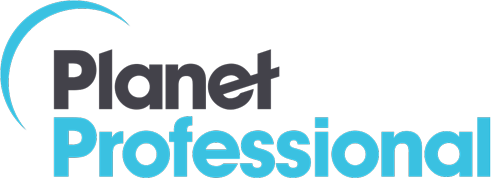Tips for Hiring a Large Group of Employees Quickly
Despite what you might see in the media, hiring is definitely taking place across the nation. The unemployment numbers don’t always tell the whole story: Different industries and positions are experiencing high job growth while others are not.
At our firm, we’ve been busy over the last six months finding candidates for positions all over the country, including many large-scale hiring projects. The companies we’re working with are in various sectors and have urgent needs for HR, accounting, data entry, warehouse/distribution, call center, healthcare, social services and retail workers. Clients are coming to us to staff long-term and short-term projects as well as permanent jobs.
But just because unemployment is high and the available talent pool is larger than it has been in the past few years, it doesn’t mean that finding good people with your needed skillset will be easy, especially if you are hiring a large group of employees. Whether you are looking for professionals or front-line staff, it can be challenging. Here are some tips on how to hire a large class of employees quickly.
Set Your Parameters and Be Flexible
Your requirements
It may seem obvious, but the first step is crafting a good job description. Take a hard look at your requirements in terms of skills, pay and hours. Be clear on the “must haves” and your “wish list.” For large-scale hiring it is particularly important to understand the location, schedules and demands of the job. Identify where you are willing to be flexible. The flexibility might be in terms of hours, shifts, pay scale or where the work will take place.
Shift work
As an example, we’ve worked with companies who initially say they need people to cover a variety of different shifts. But once you start looking to fill some of the off-hour cycles, it becomes more difficult. Some shifts are definitely more attractive than others.
Part vs. full time
Hiring a part-time employee isn’t necessarily easier than hiring a full-time employee. It actually might be harder because most people who are unemployed, or underemployed, are trying to maximize their earning potential. In order to fill less desirable or part-time shifts, consider merging them to create a full-time role.
Compensation considerations
Maybe you need to hire for a major project that will only last one or two quarters. For many companies in this situation, the jobs may never lead to a permanent role. This adds another twist. How do you attract qualified individuals and make sure they stay for the duration of their assignment, even when they know there will not be a permanent job at the end of the project? You may have to increase your hourly rate. You may even have to compensate the project higher than your permanent employees to attract candidates. Or maybe you have to offer a project-completion bonus.
Location, location, location
The geographic location where you are hiring has a big impact, too. A smaller city will have a smaller labor pool. But even in a larger labor market, you may be competing with other companies, which can also impact pay scale to compete for talent.
Remote working options
Before the pandemic, working from home was a perk, something that was negotiated at hiring. Covid has changed that forever. Now, hiring managers must decide if the job is on-site, able to be done from home or completely virtual. Many people are still hesitant to go back to working in an office environment. How flexible can you be about where the work is done? And if the work can be accomplished off-site, can you supply the technology needed for the employees?
All of these scenarios require flexibility from the employer. Review your initial job requirements and clarify what you must have and where you can adapt to the market.
Be Organized
If you are embarking on a large-scale hiring project, it’s a major commitment in time and effort. Consequently, preparing your organization and managing the logistics are crucial. Organizations with large hiring needs are getting slammed and quickly need to staff up. At the same time, recruiting and hiring employees takes time – time that hiring managers don’t have because they are so busy.
So, the key is getting all your ducks in a row. And that means clearly defining your process:
- Who will receive and review the resumes?
- Will interviews be in-person, on the phone or via video?
- Do interviews need to be conducted one at a time or could you hold a job fair?
- Who will be involved – HR, the hiring managers, others?
- How quickly can you get back to the candidates?
- When is the official start date?
- What will onboarding look like? What training will need to happen?
- Do you need additional technology for all the hires?
- Will you utilize external resources like a staffing firm or job board? Have those already been vetted and chosen and are your accounts set up?
Any step that slows down the process makes it more likely that you will lose candidates, especially if you are in a competitive market. Because of this, you may need to streamline your hiring process, eliminating steps you would have used in the past.
Because of the time and resources required, managing the logistics is very important. If you don’t have an applicant tracking system, consider setting up a spreadsheet or similar tool that allows you to track candidates, interviews and hiring decisions. Make this a sharable document for all those involved.
Use Your Staffing Agency to Its Fullest
Because taking on a large class of hiring is a big undertaking, you want to make sure you’re doing it the best way you can. If you aren’t partnered with a recruitment firm already, consider engaging with one. Your staffing agency has their finger on the pulse of the labor market. They can inform you of pay scales, competition and overall availability of talent in the locations you need. They also know what other organizations have done successfully and what will work in today’s job market.
Once you start working with your staffing firm, there will be a lot going on all at once. There is usually an initial wave of activity – sometimes a little overwhelming – so working in partnership is crucial. Share tracking tools like spreadsheets with your recruitment partner so that everyone can see in real-time the open positions and candidates’ progress through the hiring process. Communication and access to shared information helps all parties prioritize and act in concert.
Tackling large-scale hiring can be daunting. But with flexibility, planning and a strong staffing partner, the process will go smoother and faster.
Photo credit: Canva



